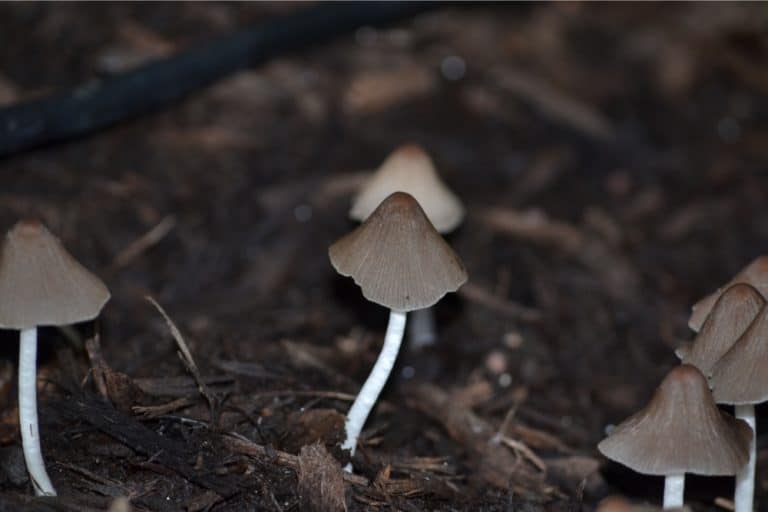How To Grow Tomatoes In Rainy Season + Growing Tips! [2022]
Have you thought about how to grow tomatoes in the rainy season?
If you’re a gardener, then you know that keeping tomato plants healthy is not easy. Growing them can be a challenge, especially during the rainy season.
Too much rain can cause the soil to become soggy and root rot can set in, while not enough rain can lead to a lack of growth and smaller tomatoes.
But with a little bit of know-how, you can grow beautiful tomatoes during even the wettest months.
The good news is that you can have healthy tomato plants during even the wettest months just by knowing some little tricks.
Read on for tips on how to grow the best tomatoes and how to make your tomato plants thrive no matter what the weather throws at them!
At A Glance: How To Grow Tomatoes In Rainy Season, 7 Tips
- Plant Your Crops On Beds
- Keep Your Crops In Distance From One Another
- Always Support Your Plants
- Check For Pests
- Check For Disease
- When To Harvest
- What To Do In Droughts

Affiliate Link Disclosure
Some of the links on here are affiliate links and I may earn if you click on them, AT NO EXTRA cost to you. Hope you find the information here useful! Thanks.
Related Posts
- What Size Grow Bag For Tomatoes Is Best?
- How Cold Can Tomatoes Tolerate?[+Tips To Keep Them Juicy]
- How Many Tomatoes Per Plant? (And How To Grow More!)
- What Is Eating My Tomatoes? [And How To Fix It!]
- How To Grow Tomatoes Without Tough Skins: 7 Helpful Tips
- How To Grow Moneymaker Tomatoes + Tips To Grow Faster! [2022]
7 Tips On How To Grow Tomatoes In Rainy Season
If you have a yard and you want to make good use of it, eat organic food, and most importantly, practice your biggest hobby: gardening, consider all these tips on how to grow tomatoes outside.
1. Plant Tomatoes In Raised Beds
When you want your tomatoes to thrive during the rainy season, the most important thing to do is plant them on raised beds.
Plant your tomatoes in raised beds if you want a bountiful tomato crop in wet weather.
This will help the roots stay dry and prevent the fruits from sitting in mud.
It is crucial to set tomato beds along the flood path. Do not plant them across flood paths.
The reason for setting tomato beds along the flood path is that this way drains away quickly.
2. Keep Crops In Distance From One Another
One way to help prevent disease infestation is to ensure that your crops have adequate spacing.
You can accomplish this by planting in a single row on the bed.
This allows for better ventilation and helps to reduce humidity levels. It is very important for tomatoes to have some breathability, especially in the rainy season.
Tomatoes are one of the trickiest plants that grow in rainy season.
Planting them in rows is not enough. Defining the proper distance is another factor contributing to their breathability during the rainy season.
If you are planning to plant tomatoes of the small bush varieties, you need to set them 24 inches apart from each other.
While for larger varieties, keep a distance of 36 inches in a row.
Distancing ensures that the plants have enough space to grow without crowding each other out.
In addition, routine work on the farm, such as exploration, spraying, weeding, and harvesting, will be much easier if your crops are well-spaced.
Following these precautions, you can have a bumper crop of healthy tomatoes.
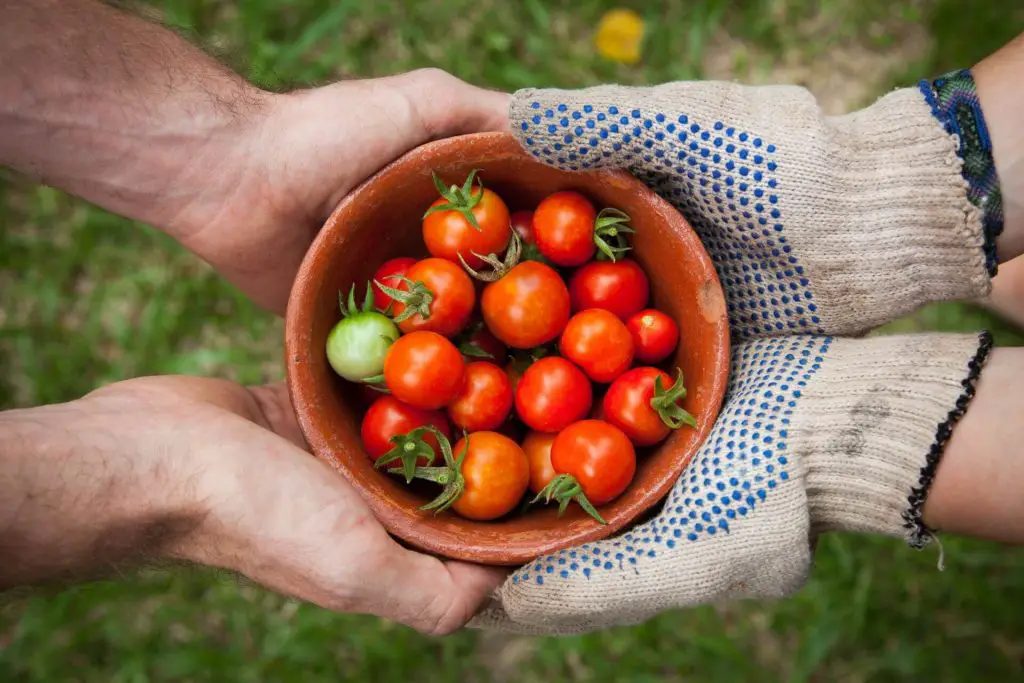
3. Always Support Your Plants
You always need to support your plants that grow from the ground up.
Not only is stalking important for the farmer, in terms of being more practical for him to take care of the plant, but stalking is crucial for the tomato itself.
As any experienced gardener knows, it is essential to stake your tomato, pepper, cucumber, and bean plants during the wet season.
Staking is an essential tool for growing tomatoes in the wet season.
Staking allows for better airflow around the leaves, which helps to prevent fungal diseases from taking hold. By stalking, you will be able to keep the top of the tomatoes all dry and ventilated.
It helps the fruits ripen more evenly by allowing more sunlight to reach them.
Prolonged contact with the ground can lead to fruit rot and waste, deforming them and making them unappealing to potential customers.
Ensure your vegetables stay healthy and thrive even in wet weather conditions by following these simple tips:
First, choose a high-quality stake that is strong and durable enough to withstand the elements.
Second, take care to secure the stake in the ground properly, so it does not come loose or fall over.
Finally, keep an eye on your vegetables and check them regularly for signs of rot or damage.
4. Check For Pests
Even though tomatoes are one of the best plants to grow in rainy season, it is still common to solve bacterial or fungal problems.
Knowing this beforehand, try to be offensive rather than defensive in your garden.
Do not wait until you see the disease before taking precautions.
Have a pre-determined protocol at hand and apply within the deadline.
The Pest Control Protocol also applies to disease control, but you may not need to use it regularly as in disease control applications.
It is essential to conduct adequate surveillance because most pests, especially insects, are not visible to the naked eye from afar.
Go through the area methodically and check for any holes or signs of chewing. If you see anything suspicious, investigate further.
Time spent observing your tomato plants will pay big dividends to come harvest time.
Check leaves and stem fruit regularly for insect or discoloration damage.
Also, keep an eye on the ripening process to be sure when is the right time to pick.
5. Check For Disease
For your tomatoes and other plants grown in rainy season, you should be proactive, rather than reactive, for disease prevention.
That means having a pre-determined protocol for regularly applying preventative measures rather than waiting until diseases have already begun to occur.
You can take preventative and curative measures, but it is always best to have solutions before problems start to take hold.
If you have a proactive approach, you can minimize potential yield loss and produce healthier plants.

6. When To Harvest
Many fruits and vegetables are prone to rot in high humidity, so it’s important to harvest them as soon as they’re ripe.
If you don’t harvest on time, you may have nothing to harvest at the end.
Tomatoes are especially susceptible to delayed ripening in cooler temperatures, so you may need to harvest and store them to speed up the ripening process.
Wait until your tomatoes are half pink and half green. At this point, you can harvest and ripes off the vine securely, without losing any quality or flavor.
Many methods can get the fruits onto your plate – be sure to act on time before they go bad.
7. What To Do In Droughts
With climate crises always bringing new weather patterns, you need to also think about how to grow a tomato in drought. Or even how to save a dying tomato plant.
In case there is a drought, conduct research on the varieties that best adapt to the dry weather and can thrive with only a little water.
But if you are wondering how to rejuvenate your dying tomato plant then I suggest you first transfer your plant into another pot or just choose another spot in your garden.
After that, prune all the dying leaves and throw them in the garbage as they can have a disease.
Next, dig a circle around it and mulch. Both organic and not organic will do.
Make sure it is getting enough sunlight, water, and fertilizer.
Give it some time. It will nourish again.
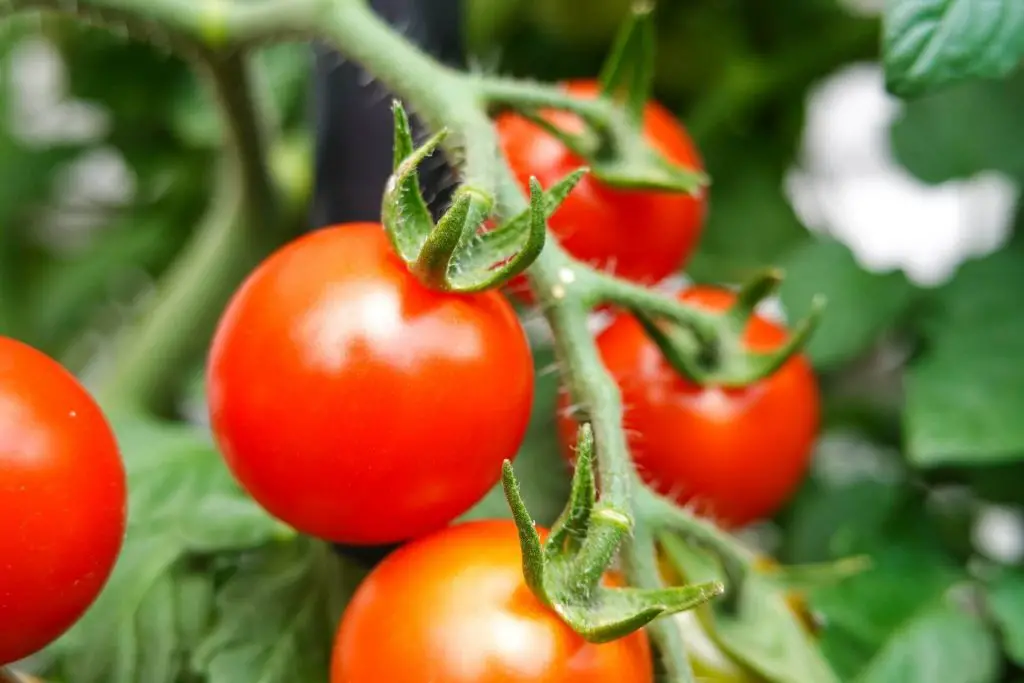
What Is The Best Way To Grow Tomatoes?
There is no recipe on growing thriving plants. All gardeners have developed their skills through trial and error.
Expect for the ones who already have a green thumb. As a result they can turn plants into green beautiful gardens with only one touch.
However, it is common knowledge that all plants need nutrition, water and some quality sunlight to grow and turn into delicious food.
Besides, there are three main ways to help a plant reach its full potential.
1. Prune
It’s important to prune lower leaves to promote air circulation.
Ventilation will also help minimize disease risk, as pathogen-laden water can splash up from the ground and onto the lower leaves.
To prune, snip off any diseased leaves with a pair of sterilized pruners.
Be sure to dispose of the diseased leaves in the garbage and not the compost.
If you put it in a compost the leaves will turn into “food” for the plant. But this food is “poisoned”. This means the disease could spread to other plants as well.
That is why you must be very careful and put every leaf in separate garbage.
2. Fertilizer
Tomatoes are one of the most delicious vegetables to grow in home gardens, and for a good reason.
They are easy to care for and produce bountiful harvests of delicious fruit.
However, tomatoes do require some attention when it comes to fertility.
As such vigorous growers, they can quickly deplete the nutrients in the soil.
As a result, it is important to observe the growth and health of your plants and to fertilize regularly.
Water-soluble fertilizer can be applied to the soil every week or two during the growing season. If the soil is too saturated to water with fertilizer, use foliar fertilization instead.
Mix a fertilizer solution with water and spray it onto the leaves of your plants.
You can also use plastic mulch to cover the surface of your beds or ridges. This helps prevent weeds from competing with your tomatoes for nutrients.
You will enjoy a bumper crop of delicious tomatoes with a little care and attention.
3. Mulch
Using mulch can be an effective way to deal with excess moisture in the soil by preventing water from evaporating and drowning the roots.
Be careful, though – if your plastic culture is impermeable to air and water, constant heavy rainfall can saturate the soil and drown the roots if the soil cannot dry out.
Mulch also acts as a barrier to prevent soil-borne fungal spores from the lower leaves of tomatoes.
One way to reduce the risk of fungal problems is to plant disease-resistant varieties.
Another is to practice good hygiene by disinfecting all tools and equipment that come into contact with the plants.
Finally, ensure good ventilation around the plants to promote air circulation and prevent humid conditions that favor fungal growth.
Which Tomato Is Best In Rainy Season?
If you’re wondering which tomato is best in rainy season, here are the top picks:
- EW-815 tomatoes – perfect for cultivation during the rainy season. It has resistance to bacterial withering and yellow leaf curl disease, which makes it highly sought after by farmers in fields all over America and grocery store shoppers looking forward to their favorite summertime dish – tomatoes on top!
- Melkashala tomato – produces an abundant yield of good fruit breadth but is smaller in size than some other types; this means they’re great if you want maximum production without compromising quality too much.
Another winner from these genetics? “Tomato San spaghetti sauce!”
How Do I Protect My Tomatoes From The Rain?
If you’ve wondered how to protect my tomatoes from the rain, you can spread layers of newspaper sheets around the base of your tomato or other vegetables. After that, cover that layer with another thin layer of mulch. The covering prevents the lower leaves from getting splashed and trims the lower sets of leaves that are too close to the soil.
What Happens If It Rains On Tomato Plants?
So, what happens if it rains on tomato plants? When the tomato begins to ripen, it develops a protective skin that helps the harvesting process. If it rains heavily on tomato plants, the chances are that the tomato’s fragile skin will start to crack and split because now the soil is inconsistent with moisture.
Do Tomatoes Like Heavy Rain?
Do tomatoes like heavy rain? Even though a gardener or farmer can do several things to provide longevity for a tomato plant, tomatoes still do not like heavy rain. Tomatoes as a crop can suffer from several problems related to heavy rainfall, like a shorter harvest period and affected yield.
After reading this article, have you figured out which is the best way to grow tomato plants in the rainy season?
No matter where you live, there is always a season that tomatoes don’t thrive in the garden. However, do not get discouraged.
Just like you and other living things, tomatoes will reach their full bloom once they are ready.
However, with a little bit of extra care and some tips from this article, you can learn how to grow tomatoes in rainy season and still have delicious tomatoes during your region’s off-season.
With a little bit of effort, you can keep your tomato plants healthy and produce fruit.
Also, if you have planted lots of tomatoes for your entire family, make sure you come up with a list of how to make the best use of them.
No tomato on Earth deserves to go to waste. Give them a chance to nourish you all year long and add a pinch of taste to every meal.
Give it a try!
Related Posts
- What Is Eating My Tomatoes? [And How To Fix It!]
- Can Tomatoes Grow In Clay Soil?
- How To Grow Tomatoes From Seeds Without Soil
- How To Grow Oxheart Tomatoes+ Unique Growing Tips [2022]
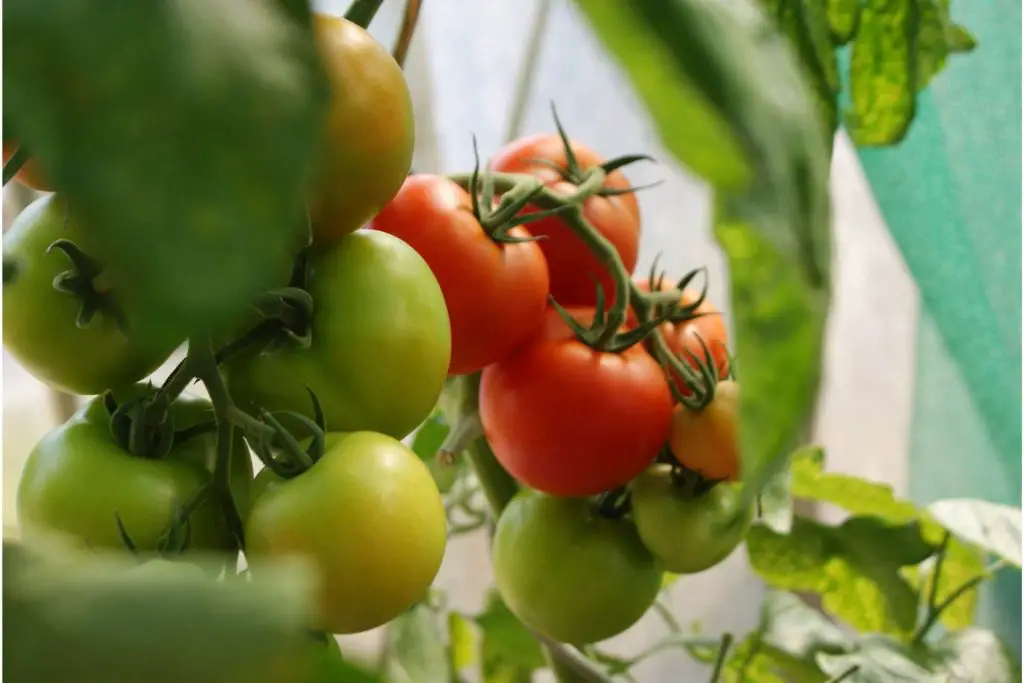





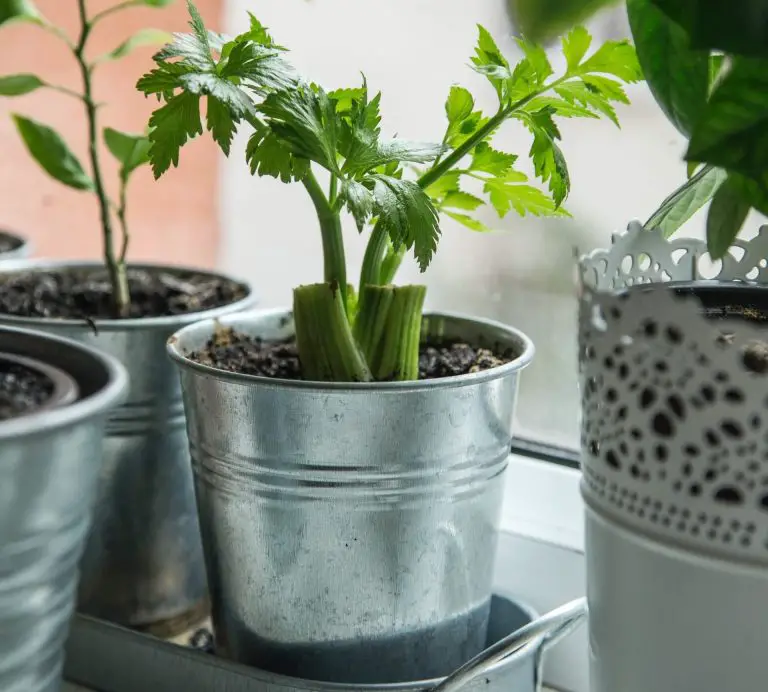
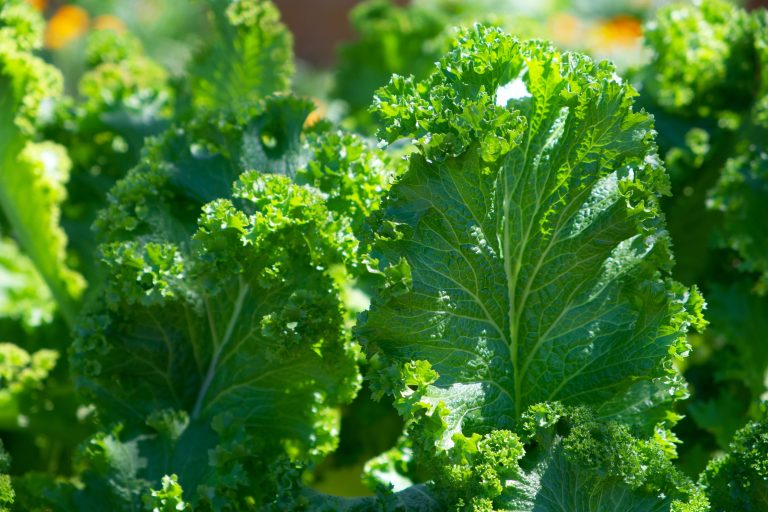
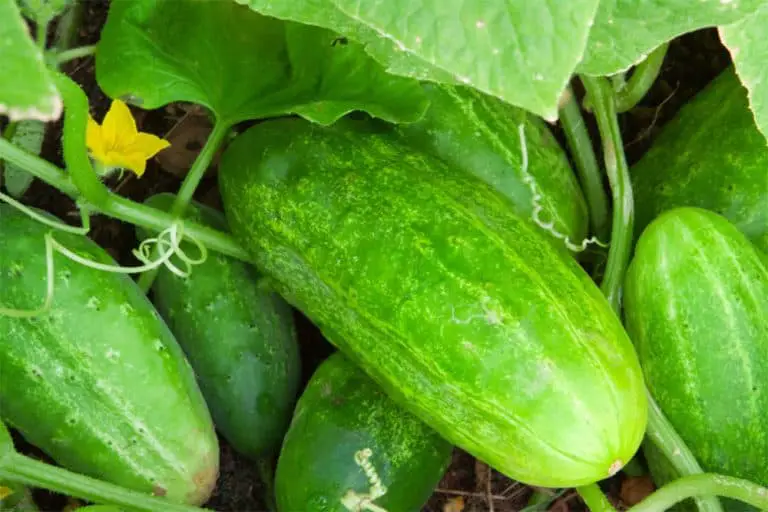
![Aquaponic Tomatoes: How To Grow, Common Issues + Best Varieties [2022]](https://aboveandbeyondgardening.com/wp-content/uploads/2022/08/aquaponic-tomatoes-768x512.jpg)
![How To Harvest Chives Without Killing The Plant [Exact Steps]](https://aboveandbeyondgardening.com/wp-content/uploads/2022/10/how-to-harvest-chives-without-killing-the-plant-4-768x512.jpg)
